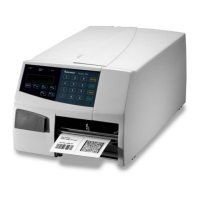vi Intermec EasyCoder PF2i, PF4i, and PF4i Compact Industrial—Service Manual
Preface
About This Manual
This Service Manual is intended to facilitate installation, troubleshooting
and repair of the Intermec EasyCoder PF2i, PF4i, and PF4i Compact
Industrial in the versions delivered at the date of publishing. Thus, all
information on the Intermec Fingerprint fi rmware is based on version
8.10 and information on the the Intermec Programming Language (IPL)
is based on version 2.10. The on-going product improvement can be
followed in the Printer Technical Bulletins from Intermec.
Note that even if the printers are technical identical (with the exception of
the keyboard overlay), Fingerprint and IPL make the printer work quite
differently and certain devices and options are not supported by IPL.
Generally, illustrations in this manual show printers running Fingerprint.
This Service Manual is supplemented by the following publications,
which the service technician also should keep easily available in their latest
versions:
• Intermec EasyCoder PF2i, User’s Guide (Fingerprint version)
• Intermec EasyCoder PF4i, User’s Guide (Fingerprint version)
• Intermec EasyCoder PF4i Compact Industrial, User’s Guide (Finger-
print version)
• Intermec EasyCoder PF2i, User’s Guide (IPL version)
• Intermec EasyCoder PF4i, User’s Guide (IPL version)
• Intermec EasyCoder PF4i Compact Industrial, User’s Guide (IPL ver-
sion)
• Intermec EasyCoder PF2i, PF4i, and PF4i Compact Industrial, Spare
Parts Catalog
• Installation Instructions for various options
• Intermec Direct Protocol v8.10 (or later), Programmer’s Reference
Manual
• Intermec Fingerprint v8.00 (or later), Tutorial
• Intermec Fingerprint v8.10 (or later), Programmer’s Reference Manual
• IPL Programming, Reference Manual (rev. 006 or later)
Please note that the operations described in this manual only should be car-
ried out by skilled and authorized personnel with proper training and full
understanding of written English. The printers contain wires and circuits
with up to 380V, which implies the risk of electrical shock. Moving parts
may also cause harm, if incorrectly manipulated.
It is assumed that the reader possesses reasonable skills in mechanics and
electronics and is familiar with the Intermec programming languages

